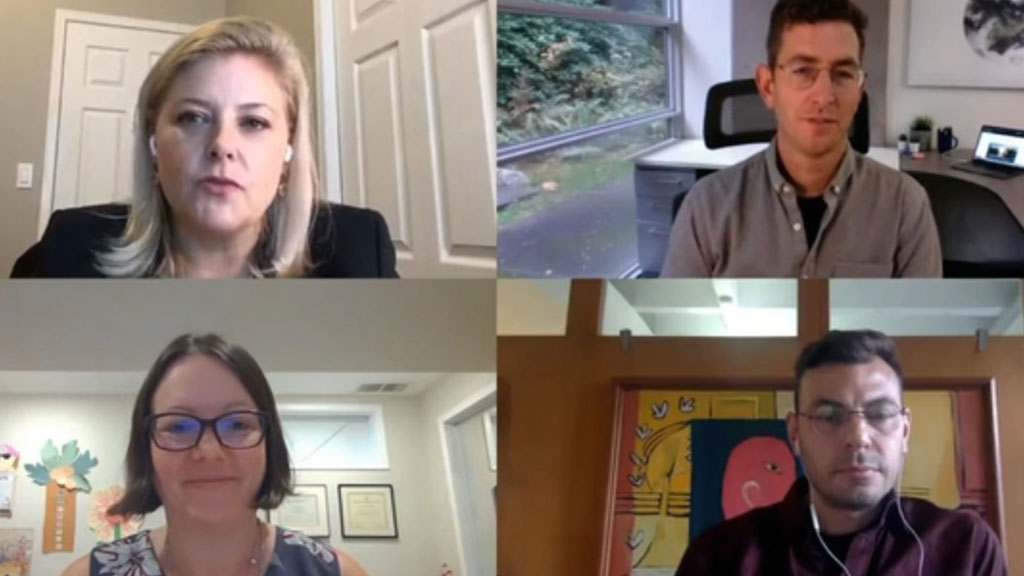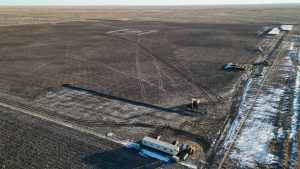Alberta designers, educators and digital entrepreneurs are all-in on construction collaboration to reduce carbon consumption.
Smart Sustainable Resilient Infrastructure Association (SSRIA) chair Tanya Doran moderated a panel titled Revolutionizing Alberta’s Built Environment Through Innovation and Collaboration, featuring BuildSense founder and president Mike Kennedy, Southern Alberta Institute of Technology (SAIT) research associate Melanie Ross, and Manasc Isaac project and design lead Vedran Skopac.
The SSRIA is a non-profit association with the twin goals of getting Alberta to reduce greenhouse gas emissions by 40 per cent by 2030 and to position Canada as a global leader in the architecture, construction and engineering industries.
Kennedy pointed to a curtain wall installation at a Concordia University of Edmonton building BuildSense participated in along with Manasc Isaac and the SSRIA as an example of collaboration across industry disciplines. The building uses fiberglass manufactured in Alberta combined with vacuum insulated glass to improve the building envelope’s energy performance.
The Concordia project points to the value of collaboration, Ross said.
“It speaks to how you can bring minds together and go down paths you hadn’t thought of before,” she said.
Skopac and Kennedy both stressed the importance of retrofitting existing structures.
“We’re working with developers and encouraging them to renovate existing buildings before building new ones. But there will also be a fair share of new construction,” Skopac said.
“It’s a huge opportunity for existing building stock. As a data guy, capturing usable data is something we can invest in. As we update building codes making data part of that equation gets the ball rolling,” Kennedy added.
He said the cost of technology has plummeted and what was once impractical to put into buildings can now be used to radically improve efficiency.
“Artificial intelligence can get rid of a lot of time-consuming tasks. We aren’t talking about changing the world but using technology to do what we need to lay down a digital ecosystem framework,” he said.
The assurance brought to projects through data collection can be applied to financing as well, he added.
Skopac termed the SSRIA and similar organizations as a “breakthrough” that moves the industry past the planning and speculative stage and bridges investors and innovators towards net-zero carbon buildings.
“Energy costs are too low. We need carbon taxes on one side and initiatives like SSRIA on the other,” he said.
“In the absence of the government, we need to spread the word and show lessons learned.”
He cautioned the cost of materials isn’t the only factor keeping owners and investors from moving towards net-zero.
“It’s the perceived risk of something new even though it’s been used before. We have to be mindful of investors, owners and operators of buildings. They aren’t necessarily excited and might not want to do something new,” he said.
“You have to define innovation. It’s not an experiment or catalogue shopping.”
Kennedy agreed awareness is key in the traditionally slow-to-evolve construction industry.
“If we can close the gap between perceived risk of technologies and the adoption of new technologies, if we can bring technology to the industry like we did safety, then technology becomes part of the equation,” he said.
“We’d like to see programs where the next generation of workers have skills to understand the innovation we’re doing today so it becomes the norm,” Ross said. “We want people to come together who wouldn’t necessarily think of coming together.”
“Closing the technology gap means bringing some non-engineers into projects to think non-linearly. We could jump to a totally different state from where we are now with new technologies and non-traditional players,” Kennedy said.
Follow the author on Twitter @JOCFrey.











Recent Comments
comments for this post are closed